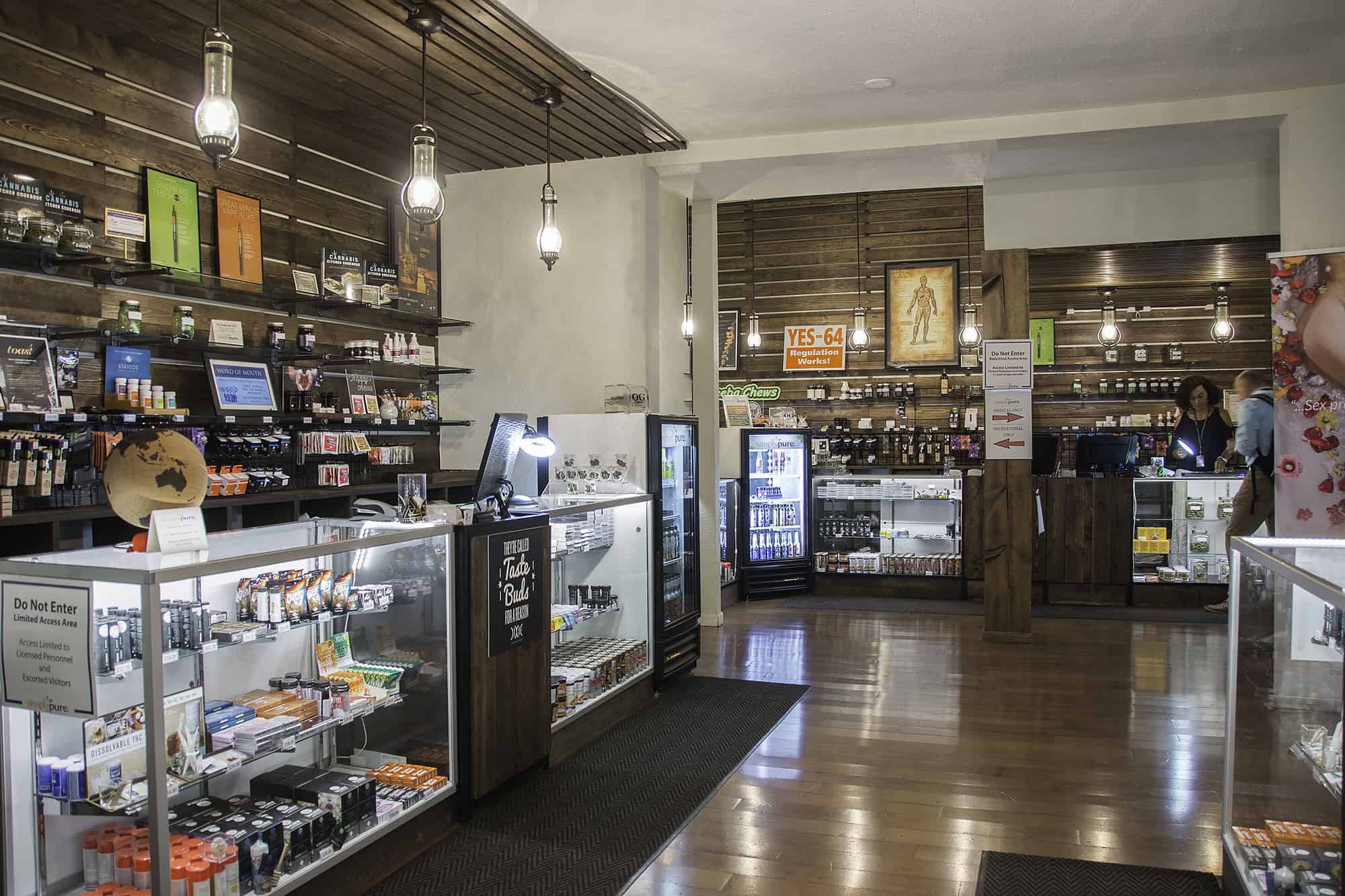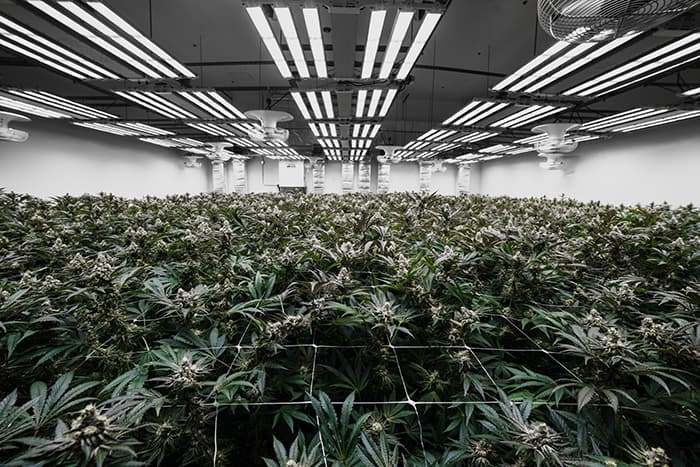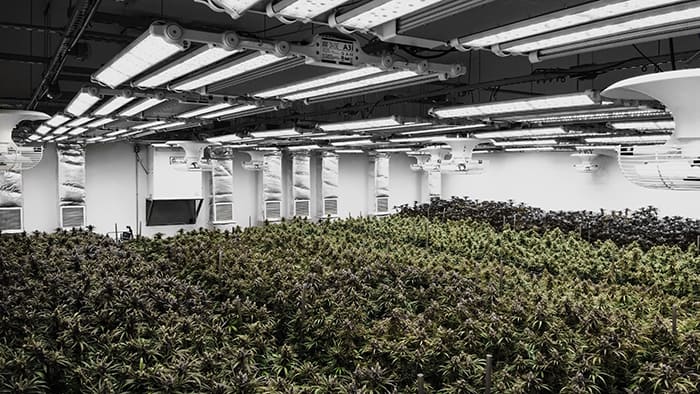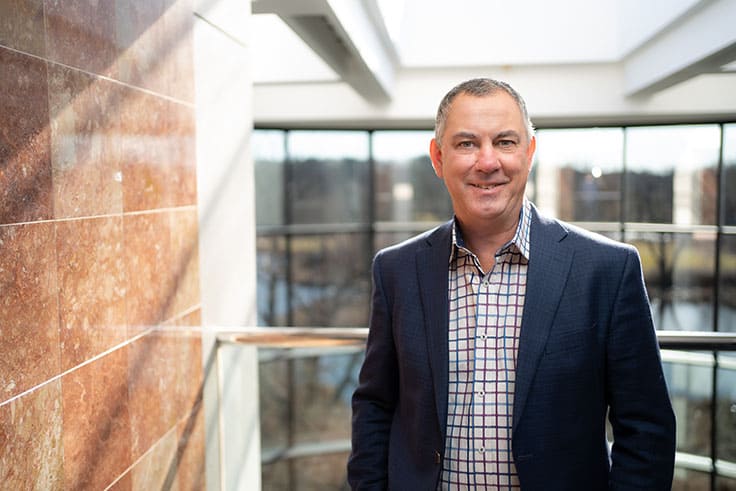
Curaleaf | curaleaf.com
To have the biggest footprint, one must lace up the biggest shoe.
In the cannabis industry, multistate operator Curaleaf spent the past five years building itself a massive network with a 23-state foundation, and has no plans on slowing down as it continues to acquire licenses and increase capacity. Based out of Wakefield, Mass., the vertically integrated company’s operation includes 96 dispensaries, 23 cultivation sites and more than 30 processing sites.
This past July, Curaleaf closed on an approximately $700-million deal to acquire Grassroots Cannabis, making it the largest cannabis company in the world, based on its anticipated $1 billion annual revenue at the time.
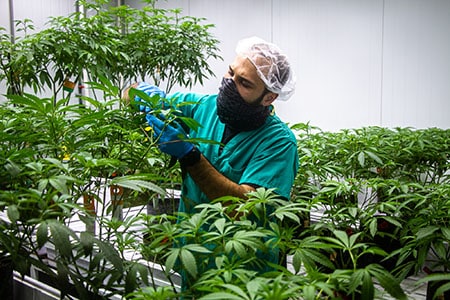
Curaleaf | curaleaf.com
With that groundwork established, Curaleaf is now gearing for its next wave of growth by putting focus toward executing on that platform, said new CEO Joe Bayern, who started his role Jan. 1.
“One of the things that’s tied to my transition into the new role is going and looking at what we’re calling Curaleaf 2.0, which is really the next growth spurt for Curaleaf,” he said.
Curaleaf executives put a lot of attention on trying to understand what they want the company to look like in the next three to five years, what the industry might look like during the next three to five years, and then what capability and capacity are needed, to help establish company goals, Bayern said.
Knowing where the cannabis industry is headed provides a strategic roadmap to follow, he said.
“Listen, we think it’s an incredibly compelling opportunity in the marketplace,” Bayern said. “We think [the U.S.] marketplace could be a $100-billion market at some point. So, we want to be the leading industry player in cannabis, and we think certainly by 2025 there’s no reason why we can’t get the industry to about a $50-billion market size. And we want to take a dominant share of that market size.”
While Curaleaf built momentum heading into 2021, implications for an accelerated pro-cannabis landscape sparked when the U.S. Senate runoffs in Georgia went democratic on Jan. 6, swinging the majority of the upper chamber.
Prepared to take advantage of the potential of those election results, Curaleaf executives pulled the trigger to raise more than U.S. $200 million through an overnight marketed offering on the Canadian Securities Exchange (CSE). Oversubscribed, Curaleaf ended up raising C$316,882,500 of capital, or about U.S. $251 million, before deducting the underwriters’ fees and estimated offering expenses.
“I think everybody was pleasantly surprised, at least from the cannabis industry, that both of those seats went democratic,” Bayern said. “As early as the week before, we were hearing it was going to be split, so I think we were obviously prepared to do something in case of a swing to a democratic Senate. Even before the Georgia race, we had filed a shelf prospectus back in November to be able to raise capital if the markets were moving in our favor, and they were.”
The underwriters exercised their over-allotment option in full, and, as a result, 18,975,000 subordinate voting shares of the company were issued, Curaleaf announced in a press release Jan. 12. Bayern said since Curaleaf oversubscribed – its original intent was to raise closer to $200 million – it allowed the company to get some institutional investors into its stock.
“I think people are now saying it’s time to jump in,” he said. “We think the Senate race was a catalyst for the industry, and it was just the first step of what we think is going to be a pretty exciting 2021 as far as positive legislation for the cannabis sector.”
In addition to the roughly $251 million raised on the CSE, Curaleaf announced Jan. 11 that it completed a new $50 million, three-year secured revolving credit facility. The loan is “expected to be used to fund capital expenditures to support future growth initiatives, potential acquisitions, and for general corporate purposes,” the company said in a press release.
An extension of a previous deal, Curaleaf lowered its cost of capital, from 13% on the original note to 10.25% on the new three-year secured revolving credit facility, Bayern said.
“It’s just another indicator that we think that the capital markets are loosening up a little bit for our space,” he said. “And then I think if there is change in the [Secure and Fair Enforcement (SAFE)] Banking Act … that there’s going to be a new round of capital coming into our industry. And I think that’s going to be important for us to be able to scale up and grow and continue to expand, if we are going to be able to supply the deeds of a $50-billion market over the next couple of years.”
In addition to potential advantages the cannabis industry might experience from the results of the Georgia Senate runoffs, there’s a lot of opportunity for non-legislative changes to help accelerate momentum in the marketplace, Bayern said. One of those changes could come in the form of a revised memorandum from the Department of Justice (DOJ), he said.
In 2013, then-Deputy Attorney General James M. Cole issued guidance on cannabis enforcement, directing the DOJ not to prosecute any state-legal cannabis businesses – taking a hands-off approach. In 2018, then-Attorney General Jeff Sessions issued a memorandum that rescinded Cole’s directive. It has remained a gray area ever since.
“I think guidance around the criminal aspects of cannabis and where [the DOJ] should be focusing their time [would help momentum in the marketplace],” Bayern said. “And I think guidance coming out of the U.S. Treasury would be helpful to provide some kind of confidence and security to U.S. investors and banking organizations to be able to, again, participate in the U.S. banking landscape.”
Banking roughly $300 million, through its overnight marketed offering on the CSE and through the three-year secured revolving credit facility, to kick off 2021, Curaleaf’s growth is capitalized for the remainder for the year, and most of 2022, so the company doesn’t have current plans to go out and raise additional capital, Bayern said.
Instead, Curaleaf wants to speed up some of its projects scheduled for the back half of 2021 and the beginning of 2022, in anticipation of accelerated market growth, he said.
“As you know, if you follow the industry, the constraining item for the last couple years has really been about building enough capacity to meet the demand of the marketplace,” Bayern said. “We think as we continue to see what we’re calling a ‘green wave of acceptance,’ of consumers accepting cannabis as more mainstream products, we’re going to continue to see increased demand. We want to be prepared to be able to meet that demand.”
In its current footprints, Curaleaf is considering extending its capacity through targeted bolt-on acquisitions in the marketplace, as well as investing in the next wave of growth, which Bayern said is predicated on innovation and developing standout products backed by science.
To do that, Curaleaf wants to put money toward research and development and clinical studies, in an effort to gain exposure to a broader segment of the U.S. marketplace with products that are suitable for those consumers whom the company hopes to bring into its category, Bayern said.
“Why we’re optimistic about that is, in many cases, those consumers are already consuming other products today,” he said. “So, the consumption is there. It’s just that we can provide a better alternative to what’s in the market today, whether it’s alcohol, or whether it’s prescription drugs for need-states like sleep or chronic pain, you know, cannabis really is a better alternative to those products.”
Behind a balanced portfolio across the U.S., Curaleaf is optimistic about growing, not only in its current footprint, but also as it moves toward building an omnichannel consumer product company, Bayern said.
Curaleaf has exposure to developed West Coast markets, like California and Oregon. It has exposure to up-and-coming markets, such as Arizona and New Jersey, which passed adult-use legalizations measures in the November election. And it has exposure throughout most the Northeast, where Curaleaf is headquartered.
With populated states like New York and Pennsylvania having yet to pass legislation that fully legalizes cannabis, Bayern said Curaleaf is most excited about the future marketplace in and around that region of the U.S.
“We think New York could be one of the most attractive markets, not only in the U.S., but in the whole world,” Bayern said. “If you look at the disposable income, you look at the density of population, you look at the per-capita consumption today, it could easily be a $4-[billion] or $5-billion market over the next couple of years.
“What’s important, though, is that New York learns from some of the predecessors about how to roll out an effective program, and they do it in a way that’s responsible and really manages across all of the constituents. Whether it’s existing patients and consumers, it’s being able to generate tax revenue for the state, it’s creating jobs in New York state, and it’s addressing the many issues of the social equity and balance that’s happening in cannabis and across other parts of society.”



